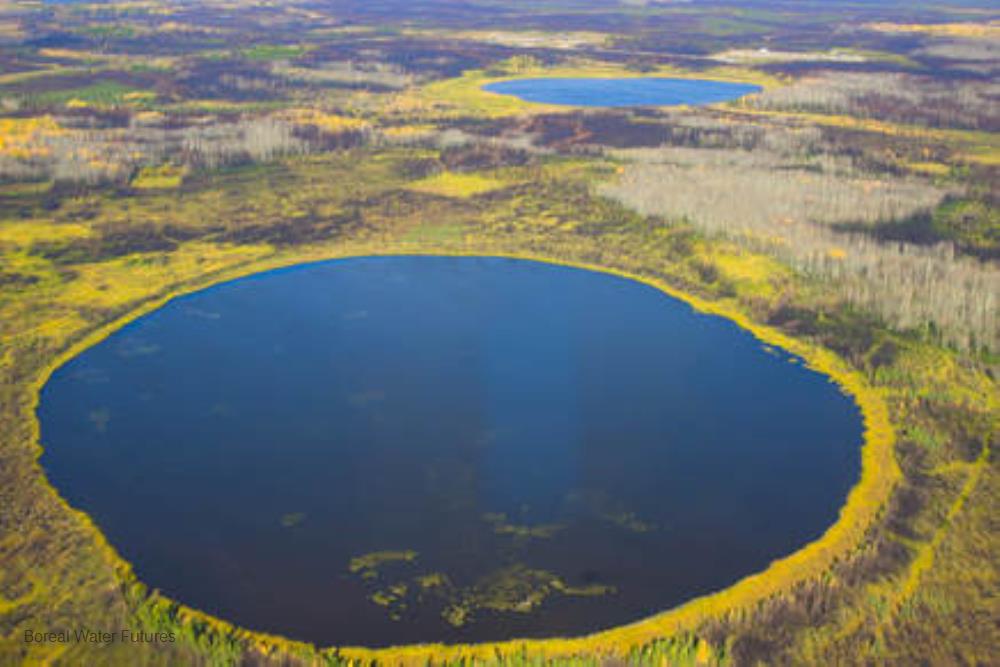
Related items loading ...
Section 1: Overview
Name of Research Project
|
Related Project
|
Part
|
|
Select first related project
|
|
|
|
|
|
|
|
Program Affiliations
Related Research Project(s)
Dataset Title
Aggregated gridded bedrock depth dataset for Mackenzie and Nelson-Churchill River Basin based on bedrock data by Shangguan et al. (2017)
Additional Information
Creators and Contributors
|
Kuljeet Keshav | Author | | Indian Institute of Technology BHU |
Amin Haghnegahdar | Author | | University of Saskatchewan |
Mohamed Elshamy | Author | | University of Saskatchewan |
Shervan Gharari | Author | | University of Saskatchewan |
Saman Razavi | Author | | University of Saskatchewan |
Abstract
The bedrock dataset created by Shangguan et al. (2017) is aggregated to a lower resolution (larger pixels) of 0.125 degree for Mackenzie and Nelson-Churchill River Basins for its applicability with Hydrology and Land Surface Models. This dataset is in particular generated for using with MESH (Modélisation Environnementale communautaire - Surface Hydrology), a distributed coupled hydrology-land surface model developed by Environment and Climate Change Canada, as applied to Mackenzie and Nelson-Churchill River Basins. The statistics calculated for each final larger pixel (0.125 degrees) include mean, median, maximum, minimum, and standard deviation of the original higher resolution pixels within it. Also, in order to provide an idea of the reliability of this transformation, a corresponding 0.125 degrees raster dataset is created containing the number of missing values (NA) from the Shangguan et al. (2017) dataset within each larger 0.125 degree pixels.
Purpose
Plain Language Summary
Keywords
|
bedrock depth |
Mackenzie River Basin |
Nelson-Churchill River Basin |
environmental modelling |
land surface modelling |
hydrology modelling |
MESH |
Citations
Keshav, K., Haghnegahdar, A., Elshamy, M., Gharari, S., Razavi, S. (2019). Aggregated gridded bedrock depth dataset for Mackenzie and Nelson-Churchill River Basin based on bedrock data by Shangguan et al. (2017) [Dataset]. Federated Research Data Repository.
https://doi.org/10.20383/101.0152
Section 2: Research Site
Temporal Extent
Geographic Bounding Box
|
West Boundary Longitude
|
multiple, see map
|
|
East Boundary Longitude
|
|
|
North Boundary Latitude
|
|
|
South Boundary Latitude
|
|
Is Boundary Rectangular
Research Site Images
Research Site Description (if needed)
Mackenzie River and Nelson-Churchill River Basins
Basin
Mackenzie River and Nelson-Churchill River
Subbasin
Specific Locations (if needed)
Research Site Location
Map Not Available
Display
View on Global Map
Section 3: Status and Provenance
Dataset Version
1
Dataset Creation Date
2019-04-30
Status of data collection/production
Dataset Completion or Abandonment Date
2019-04-30
Data Update Frequency
Creation Software
Primary Source of Data
Other Source of Data (if applicable)
Data Lineage (if applicable). Please include versions (e.g., input and forcing data, models, and coupling modules; instrument measurements; surveys; sample collections; etc.)
1. Description of methods used for collection/generation of data:
The 250 m resolution absolute bedrock data published by Shangguan et al. (2017) has been used as the source dataset to convert into 0.125 degree resolution rasters.
Shangguan, W., Hengl, T., de Jesus, J. Mendes, Yuan, H., and Dai, Y. (2017), Mapping the global depth to bedrock for land surface modeling, J. Adv. Model. Earth Syst., 9, 65– 88, doi:10.1002/2016MS000686
2. Methods for processing the data:
The bedrock data has been converted to 0.125 degree resolution raster for Mackenzie and Nelson-Churchill River Basin using an R script. The rasters created in the process have mean, median, standard deviation, maximum and minimum of higher resolution pixels (250 m) inside each lower resolution pixel (0.125 degree). Also, the raster MRB_NA and NCRB_NA have the number of higher resolution pixel having no value inside each 0.125 degree pixel signifying the unavailability of source data per pixel.
3. Instrument- or software-specific information needed to interpret the data:
The data can be opened as a spreadsheet having three columns: longitude, latitude, pixel value (mean/median/max/min/number of NA/standard deviation). The datasets (after removing the column names) can also be opened in a GIS software (eg. QGIS) to view spatially and converted to .tif or any desired format.
Section 4: Access and Downloads
Access to the Dataset
Terms of Use
Does the data have access restrictions?
Downloading and Characteristics of the Dataset
Download Links and Instructions
Total Size of all Dataset Files (GB)
0.009
File formats and online databases
Other Data Formats (if applicable)
List of Parameters and Variables
|
longitude | degrees | 0.125 degrees | |
latitude | degrees | 0.125 degrees | |
maximum bedrock depth | cm | 0.125 degrees | max_depth |
mean bedrock depth | cm | 0.125 degrees | mean_depth |
median bedrock depth | cm | 0.125 degrees | median_depth |
minumum bedrock depth | cm | 0.125 degrees | min_depth |
Frequecy of missing values | | 0.125 degrees | NA_Freq |
standard deviation of bedrock depth | cm | 0.125 degrees | Std.Dev |


 GWFNet
GWFNet Master
Master Data
Data Research
Research Map
Map
 Advanced
Advanced Tools
Tools
 . . .
. . .
 Metadata Editor
Metadata Editor
 Record List
Record List
 Alias List Editor
Alias List Editor
 Legacy sites
Legacy sites